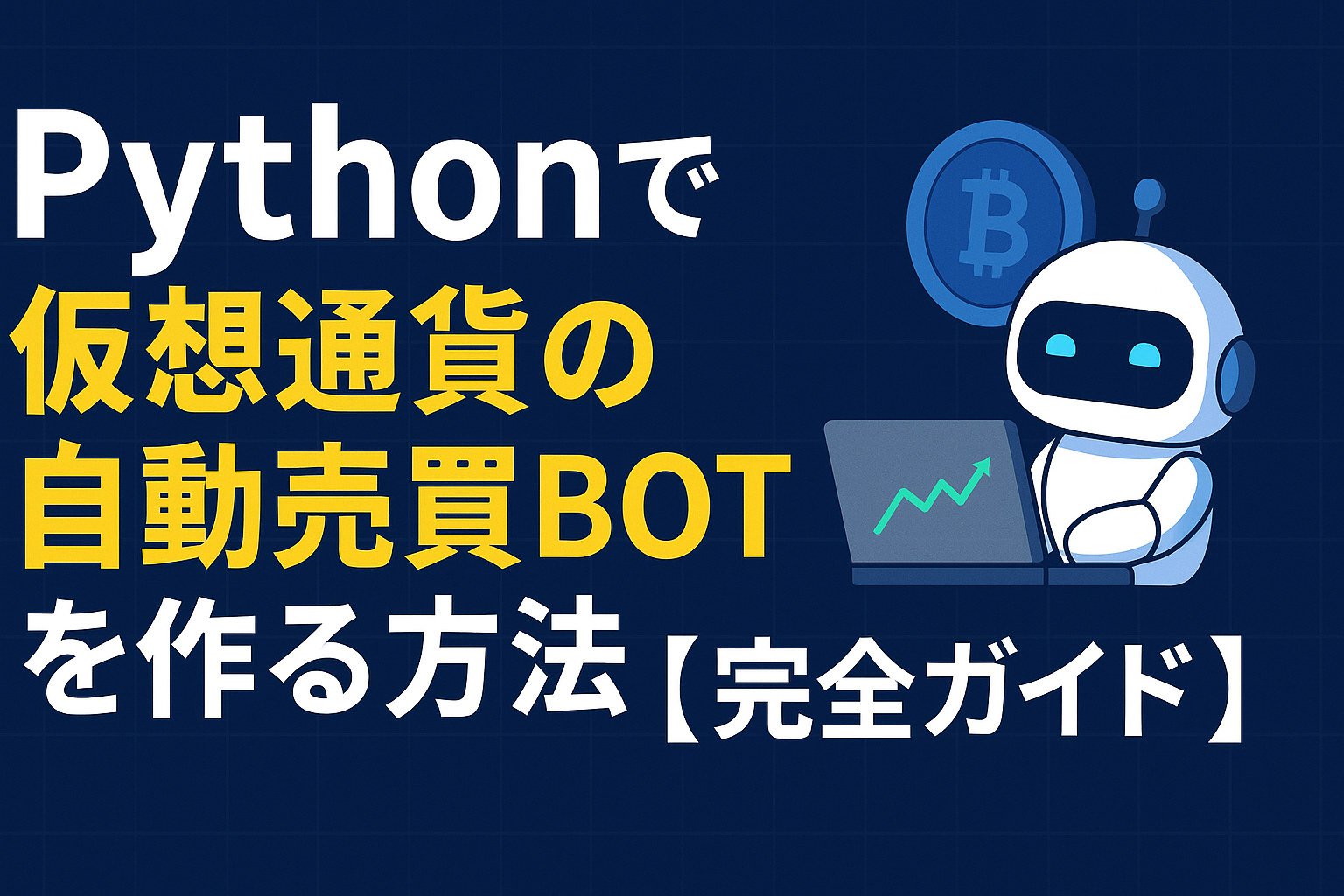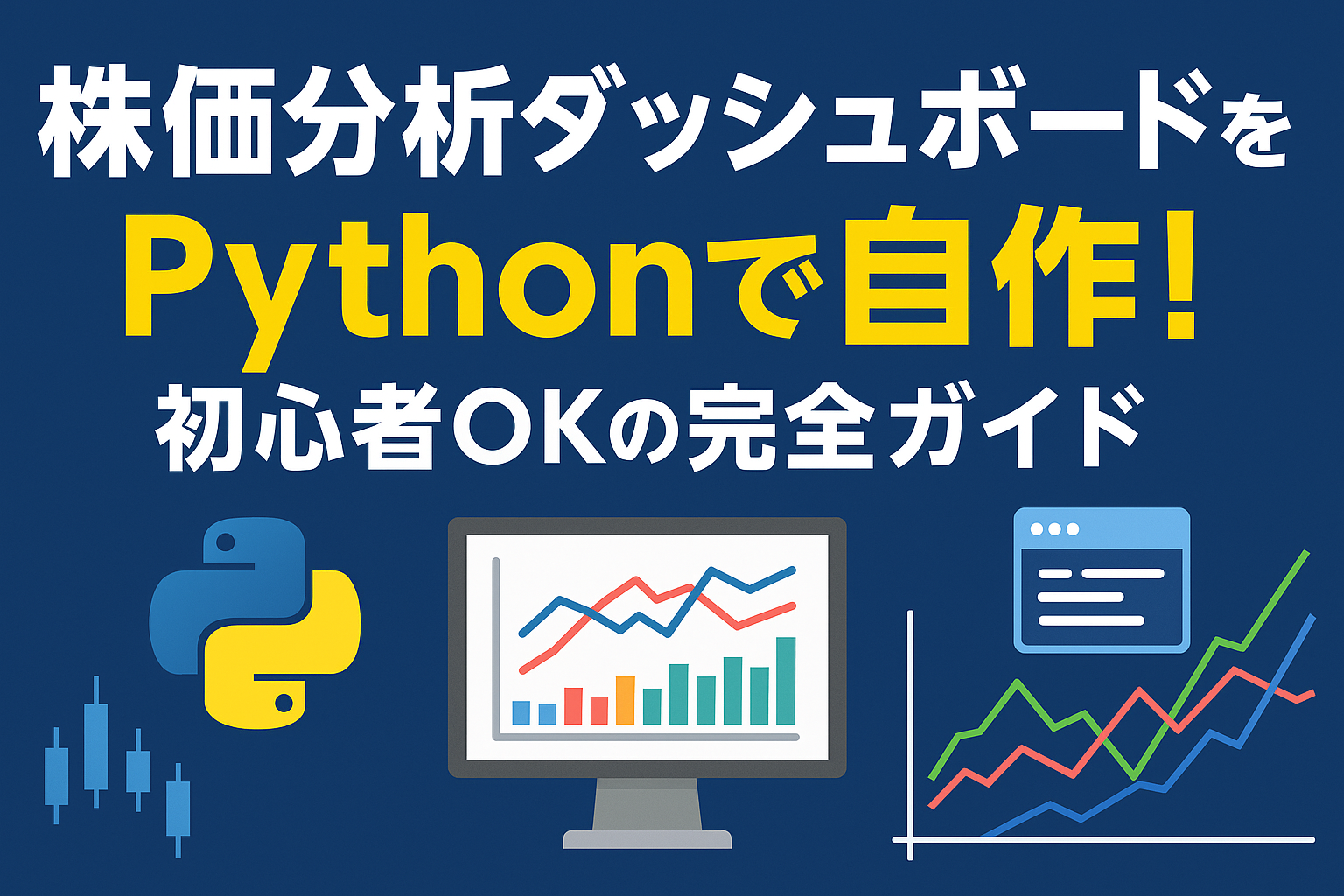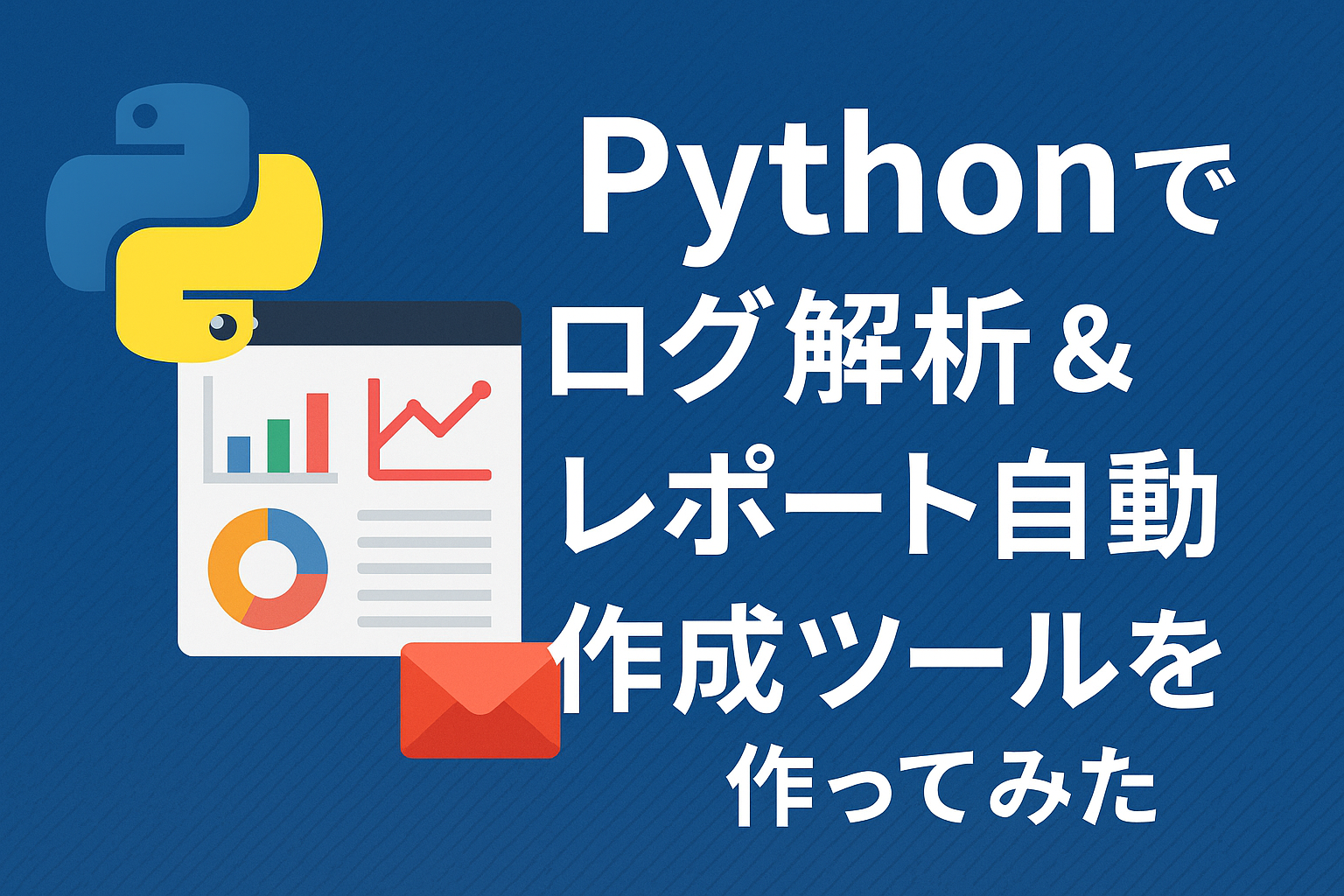"Have you ever missed the timing to buy or sell virtual currency and suffered a loss?"
Manual trading often results in missed opportunities and can be stressful.
The solution to such problems isAutomated trading BOTAnyone can easily build it using Python.
In this article, we will explain how to automate cryptocurrency trading using API integration.Carefully explained so that even beginners can understandI will.
I tried making an "automated trading BOT" with Python [cryptocurrency x API integration]
- Understand what an automated trading bot is
- Why create an automated trading bot using Python?
- Basics of API integration and selection of cryptocurrency exchanges
- Libraries and environment required for BOT construction
- Automated trading BOT implementation procedure and explanation
- Let's automate trading with the completed code
- Common errors and troubleshooting
- Precautions and safety management when using BOTs
- Summary: The future of cryptocurrency and automated trading
Understand what an automated trading bot is
Conclusion: An automated trading bot is a program that automatically buys and sells virtual currency according to pre-set conditions.
Basic role of automated trading bot
- Constantly monitor the market without the need for human judgment
- Automatically executes "buying" and "selling" according to conditions
- Emotion-free trading possible
Actual usage scenario
- Trading is possible even during late nights and busy times
- Reduce risk by automatically setting stop loss and take profits
Introducing a BOT will increase your chances of making profits efficiently.
Why create an automated trading bot using Python?
Conclusion: Python is an ideal language for creating BOTs due to its simple syntax and rich libraries.
Why Python?
- Easy API integration
- Strong in mathematical processing and data analysis
- Extensive documentation and learning resources
Comparison with other languages
- Development time is shorter than with C++ or Java
- Advanced functionality can be achieved with a small amount of code
PythonA popular language used by beginners and advanced learners alikeis.
Basics of API integration and selection of cryptocurrency exchanges
Conclusion: For automated trading, you need to use the exchange's API to obtain and send price and order information.
What is an API?
- Abbreviation for "Application Programming Interface"
- Bridging the gap between services and programs
Popular exchange APIs
- Binance: Not available in Japanese but has many features
- Bybit: Beginner-friendly UI
- bitFlyer: A reliable Japanese exchange
Public cryptocurrency exchange information:
List of registered businesses with the Financial Services Agency
Libraries and environment required for BOT construction
Conclusion: Anyone can create a BOT using Python and a few libraries.
Development environment
- Python (3.7 or higher recommended)
- Editor: VSCode etc.
Required Libraries
requests(Communication with API)time(Time manipulation)json(Data Processing)
Environment setup flow
- Install Python
- Install required libraries with pip
- Get and save your API key
Automated trading BOT implementation procedure and explanation
Conclusion: By creating the code in the following order, the BOT will work.
Implementation Steps
- Log in to the exchange with your API key
- Get prices regularly
- Place buy or sell orders depending on the conditions
- Save the results to a log
Important points to note
- Never disclose your API key to anyone.
- Try it in a test environment to prevent erroneous orders
Let's automate trading with the completed code
Conclusion: With the completed code below, you can run a basic automated trading bot.
Common errors and troubleshooting
Conclusion: Errors will occur depending on the API specifications and communication environment, but you won't have to worry if you know how to deal with them.
Main error examples and solutions
429 Too Many Requests: Too many requests → Increase the intervalInvalid API Key:The key is incorrect → Check againOrder rejected: Invalid order format → Read the documentation
Precautions and safety management when using BOTs
Conclusion: Although BOTs are useful, you need to be prepared for problems and the risk of abuse.
Security Basics
- Don't upload your API key to GitHub
- Testing on the testnet
- Set a loss limit
Summary: The future of cryptocurrency and automated trading
It is possible to build a BOT using Python even with little knowledge.
To reiterate, the appeal of an automated trading bot is as follows:
- Trading will be possible 24 hours a day, 365 days a year
- Able to make calm decisions without emotion
- Saves time
Based on the code introduced this time,Create your own automated trading bot.


